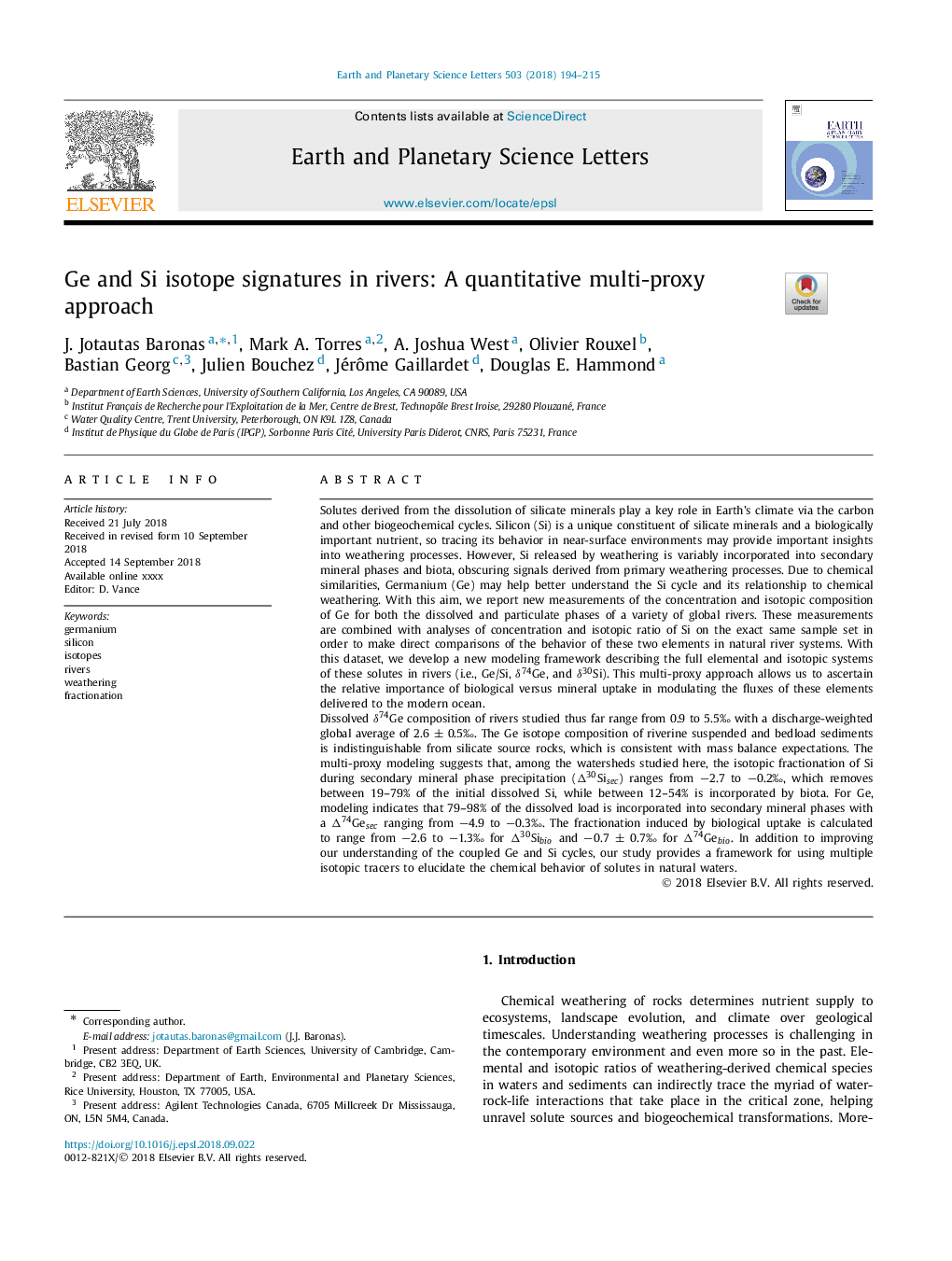| Article ID | Journal | Published Year | Pages | File Type |
|---|---|---|---|---|
| 11024700 | Earth and Planetary Science Letters | 2018 | 22 Pages |
Abstract
Dissolved δ74Ge composition of rivers studied thus far range from 0.9 to 5.5â° with a discharge-weighted global average of 2.6 ± 0.5â°. The Ge isotope composition of riverine suspended and bedload sediments is indistinguishable from silicate source rocks, which is consistent with mass balance expectations. The multi-proxy modeling suggests that, among the watersheds studied here, the isotopic fractionation of Si during secondary mineral phase precipitation (Î30Sisec) ranges from â2.7 to â0.2â°, which removes between 19-79% of the initial dissolved Si, while between 12-54% is incorporated by biota. For Ge, modeling indicates that 79-98% of the dissolved load is incorporated into secondary mineral phases with a Î74Gesec ranging from â4.9 to â0.3â°. The fractionation induced by biological uptake is calculated to range from â2.6 to â1.3â° for Î30Sibio and â0.7 ± 0.7â° for Î74Gebio. In addition to improving our understanding of the coupled Ge and Si cycles, our study provides a framework for using multiple isotopic tracers to elucidate the chemical behavior of solutes in natural waters.
Related Topics
Physical Sciences and Engineering
Earth and Planetary Sciences
Earth and Planetary Sciences (General)
Authors
J. Jotautas Baronas, Mark A. Torres, A. Joshua West, Olivier Rouxel, Bastian Georg, Julien Bouchez, Jérôme Gaillardet, Douglas E. Hammond,
